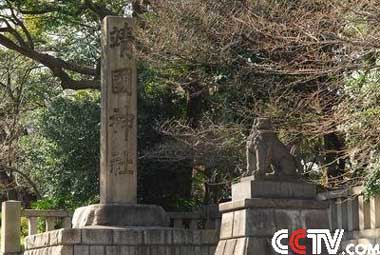Source: CCTV.com
04-17-2007 16:47
 |
| Yasukuni Shrine |
In Japan, opinion is divided about the country's role in the Second World War. In today's final part of our "Rediscovering Japan" series, we take a look at these different attitudes at the controversial Yasukuni Shrine, the "Kyoto Museum of World Peace" and the "Kamikaze Peace Museum" in Kagoshima.
The Yasukuni Shrine was constructed in 1869 to commemorate all victims of the Boshin War, as well as those who died in earlier wars since 1853. It was not until 1978 when it became a focal point of controversy among Japan's Asian neighbors. This, after 14 Class A war criminals were secretly enshrined there. Subsequent Japanese prime ministerial visits have been criticized by many countries in Asia that suffered the brunt of Japan's World War Two aggression. The shrine visits hurt the feelings of many Asians, since they are seen as symbolizing tacit approval, or even denial of Japan's past war crimes and deeds during this era.
The director of the Yasukuni Shrine says over 5 million people visited last year. And that the majority of them were young people. Many of them continue to believe that Japan's wartime actions were to defend the country.
Teuneo Watanabe, president of Yomiuri Shimbun said, "Most of the Japanese nationals who either knew about or experienced the war are non-existent at present. People today, holding no responsibility for the war, have (only) the slightest idea of what their fathers or forefathers have done. It was not even mentioned in school text books."
Mr. Watanabe's view represents one segment of voices among Japanese nationals.
Meanwhile, other Japanese squarely face their country's past.
